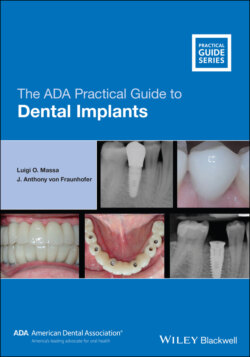Читать книгу The ADA Practical Guide to Dental Implants - J. Anthony von Fraunhofer - Страница 22
Endodontic Implants
ОглавлениеFor many years, the most established and longest established implant was the endodontic endosseous pin implant, also known as the endodontic stabilizer, and was particularly useful for rigidly anchoring a mobile tooth to bone. Tooth mobility can have many causes, including an unfavorable crown‐to‐root ratio, gum and alveolar recession, bruxism and an unbalanced occlusion.
The basis of this approach was that a pin was inserted through the root canal into the underlying bone such that it was anchored in bone but with upper end projecting into the mouth and upon which, a crown or RPD was fabricated [10].
Typically, the lower end of the pin did not penetrate the cortical plate of the mandible or the antral or nasal floors of the maxilla. Indications for endodontic implants included treatment of root fractures, external or internal root resorption and when better support and stability was required for FPD or RPD abutments.
Although the clinical use of endodontic endosseous pin implants is less common due to the advent of the modern endosseous implant, they were successful, with few contraindications for their use provided correct clinical procedures were followed [11].
